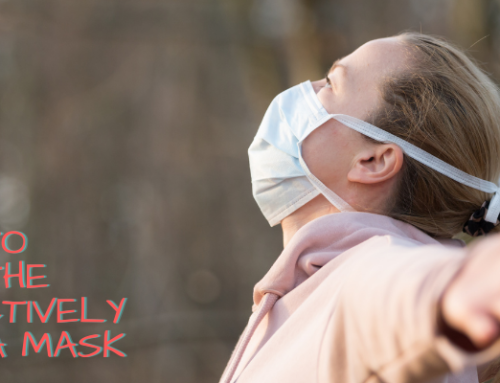“A very interesting read by Nancy Cook.”
At the start of her junior year of college, 19-year-old Camille Wallace discovered she was pregnant. At the time, she lived in student housing with three roommates in Spartanburg, South Carolina. Her relationship with the father of her child had already ended. And her financial situation? Well, that was precarious. Wallace supported herself by working temporary or seasonal jobs on vacation breaks, earning no more than $5,000 to $6,000 a year. “I was a typical college student, eating ramen noodles every day,” Wallace, now 25, remembers. “I thought: ‘I can barely feed myself. How can I feed this child?'”
Wallace’s outlook changed, however, when she saw a flyer for something called Nurse Family Partnership. The maternal-health and home-visitation program set up shop in South Carolina in 2009, and it offered her a lifeline during this daunting period.
Nurse Family Partnership works like this: It pairs a low-income, first-time mother with a trained nurse, who counsel her throughout the pregnancy and until her child’s second birthday. The nurses visit the mothers frequently in their homes and offer guidance on everything from nutrition during pregnancy to breastfeeding to caring for a newborn and child development. In many instances, the nurses also play the role of social worker to help the mothers apply for government assistance, if they qualify; navigate tricky family dynamics; or escape abusive relationships. And they mentor young mothers as well, encouraging them to finish their educations, apply for better-paying jobs, and set themselves on a path to financial stability, so they can support their families.
Most important, the nurses try to ensure that the mothers, many of them teenagers, do not feel so alone. “I knew that if something were to go wrong, the nurse was just a phone call away,” Wallace says. “It made me feel so empowered to take care of my child myself.”
Before Wallace gave birth, her nurse guided her through the process of applying for food stamps and WIC, and getting Medicaid coverage. The nurse also helped her obtain income-based housing, a step that allowed her mother to move in with her and care for the baby while Wallace completed her degree program.
Programs like Nurse Family Partnership are built on the philosophy that intervening in children’s lives as early as possible—in the womb even— is the best, most cost-effective way to help boost the lives of low-income kids. The program began in the late 1970s in New York as the brainchild of David Olds, a professor of pediatrics, psychiatry, and preventive medicine at the University of Colorado, Denver. Olds worked in a day-care facility in west Baltimore in the early 1970s, and the experience convinced him that low-income kids needed intervention as early as possible.
So Olds launched Nurse Family Partnership and tested the program out in three radically different parts of the country: Elmira, New York; Memphis, Tennessee; and Denver, Colorado. The positive results in these three pilot experiments led to the expansion of the program, which is now active in 43 states.
The thinking behind Nurse Family Partnership is that it’s much better (and cheaper in the long run) to help mothers become better parents than it is to pay for the cost of a troubled childhood. The program costs roughly $4,800 per family per year; an analysis done by Rand in 2005 showed that NFP’s interventions with high-risk families can save society, including the government, as much as $34,000 for every child involved.
The program began in South Carolina in the late 2000s, thanks to a mix of private and public funding, says Chris Bishop, the NFP state director for North Carolina and South Carolina. The median age of the mothers NFP serves in South Carolina is 19; 91 percent of them are unmarried, and 88 percent of them are poor enough to qualify for Medicaid. “We’re dealing with a very young, vulnerable population,” Bishop says—and one that’s certainly in need. Roughly one-quarter of the children in South Carolina live in poverty and do not know where their next meal will come from, according to data from the Annie E. Casey Foundation.
That mission was certainly what attracted Wallace’s nurse, Lisa Corkren, to the program. Previously, Corkren worked as both a psychiatric and hospital nurse before being recruited to NFP. Working with the low-income, first-time mothers in their homes makes such a difference, Corkren says, because it allows nurses to closely observe the a mom’s environment and to see the potential pitfalls she may face in raising a child. It also allows the nurses to develop long-term relationships with the mothers, especially since the duos work together for over two years. “As a nurse on the hospital floor, you put out fires. You never get to see what happens next,” she says. “I love the fact that with the moms, you get to start what you finish.”
With Corkren’s help over the course of a few years, Wallace moved ahead successfully with her life. She delivered a healthy baby girl, who is now almost five years old. She finished nursing school, and armed with her LPN license, found a job in a hospital system. She moved out of income-based housing into her own place and now earns several times more than the minimum wage she once made at her temp jobs. In August 2013, she married and recently gave birth to another baby. “My life has taken a complete 180,” Wallace says.
As for Nurse Family Partnership, it now serves about 800 families in South Carolina alone. Bishop estimates that thousands more low-income, first-time moms in the area are eligible for the program. For Corkren, the home visitation approach, at its best, tries to break the cycle of poverty for a certain group of women. “Generationally, they are in this low-income situation,” she says. “But this program shows them they can change the future for themselves and their babies.”






